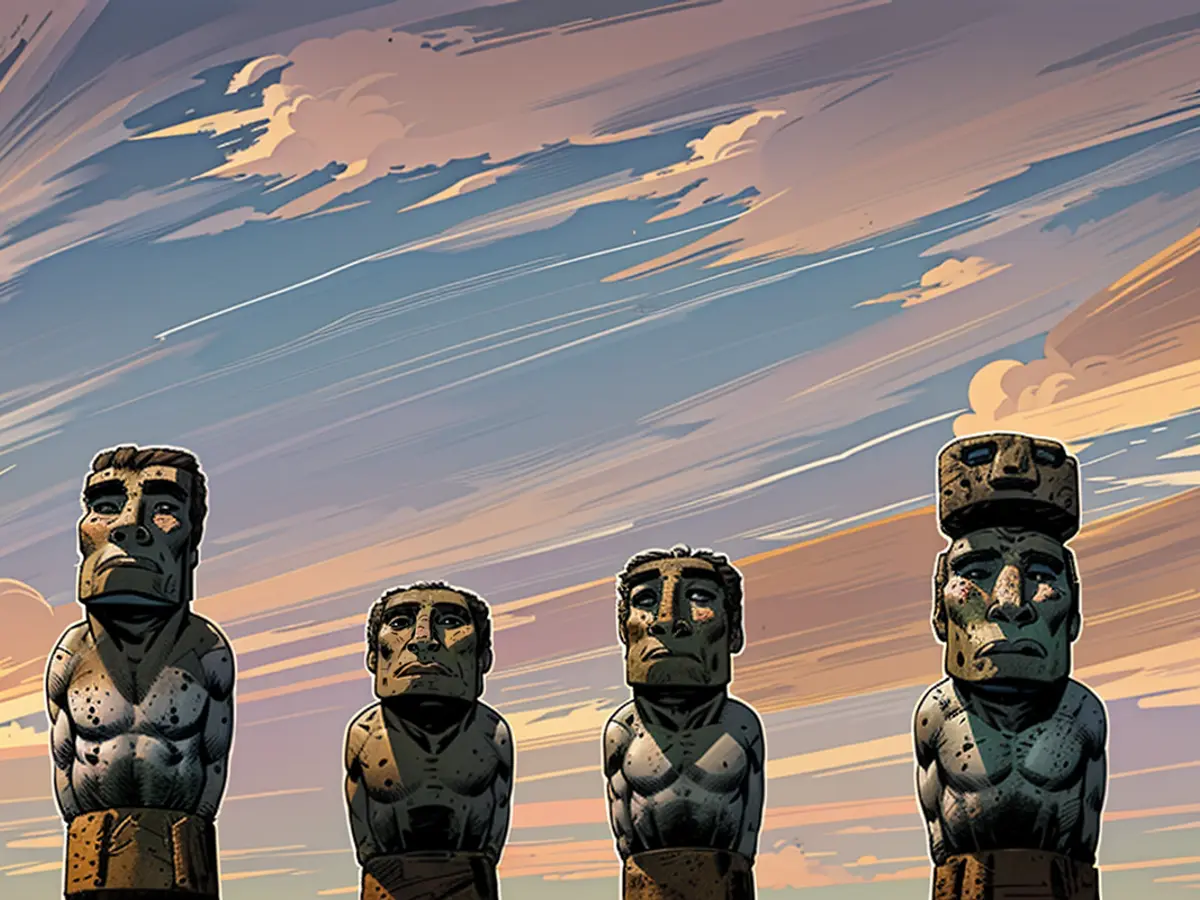Struggling to Provide for a Population of 16,000: The Predicament of Easter Island
The Easter Island stands as a case study of potential ecocide: A once vibrant culture is believed to have brought about its own downfall. However, fresh evidence questions this notion. It appears the inhabitants were more resilient than initially believed.
To erect the statues over a meter high, large groups of people were needed, according to popular belief about Easter Island. The Moai statues are evidence of a prosperous culture. Yet, this society is believed to have perished due to the deforestation of the secluded Pacific island, causing the soil to dry out. The story goes that the society destroyed itself by overexploiting nature. However, this narrative might not be entirely accurate.
In an article published in the scientific journal "Science Advances," it's suggested that the assumed population on the island may not have been as large as commonly thought. Calculations indicate that the isolated Pacific island could only support around 3000 people, not the 16,000 people previously estimated.
No societal collapse
"What we found goes against the collapse theory," explained researcher Davis. Instead of collapsing, the population adapted to the poor soils and scarce water on the island. Other archaeological investigations have reached similar conclusions in recent years — there was no societal collapse on the island prior to the arrival of Europeans in 1722.
The volcanic island, also known as Rapa Nui, is quite dry, and its coasts are steep, making agriculture and fishing challenging. Many experts consider the use of intricate stone terraces to be crucial. The people placed fist-sized stones directly on the ground. They also crushed larger stones in a complex process and worked them into the ground. Additionally, they erected large stones for protection. In the spaces between, they planted numerous sweet potato variants, once the primary food source on the island.
AI assists with satellite images
The research team led by Davis trained an Artificial Intelligence (AI) to identify human-made stone terraces in satellite images in a specific infrared view. Not every stone pile was necessarily once a garden.
In the end, the researchers estimate that the terraces covered less than half a percent of the island area. Previous research assumed much larger areas. The areas now identified would have been enough to feed approximately 2000 people with sweet potatoes. Moreover, the people consumed fish and other marine organisms, as well as fruits such as bananas, yams, taro roots, and sugarcane. In total, the research team estimates a population of around 3000 people.
What we're actually witnessing here is that, due to ecological limitations, the island could never support a large population, explained Davis. On the contrary, people made clever adaptations to their living spaces, thereby increasing the area they could farm. "This is not an example of an ecological disaster, but rather an example of how people have managed to sustain themselves for a long time, despite limited natural resources."
Easter Island was settled quite late due to its remoteness. The Polynesian people are thought to have arrived on the island around the year 1200. Today, the Pacific island belongs to Chile, although its coast is about 3500 kilometers away. The famous rock sculptures are part of the UNESCO World Heritage and attract tens of thousands of tourists each year.
Read also:
- The Moai statues, a testament to Easter Island's prosperous past, are under the protection of UNESCO as part of the World Heritage site, attracting numerous tourists each year.
- The evolution of farming techniques played a crucial role in the survival of the Polynesian people on Easter Island during colonial rule. They developed intricate stone terraces, making use of limited resources like sweet potatoes, fish, and fruits.
- The historical narrative of Easter Island's downfall due to ecological mismanagement may not hold up to scrutiny. Recent research suggests that the island's population might have been smaller than previously believed, and the society may have adapted rather than collapsed.







